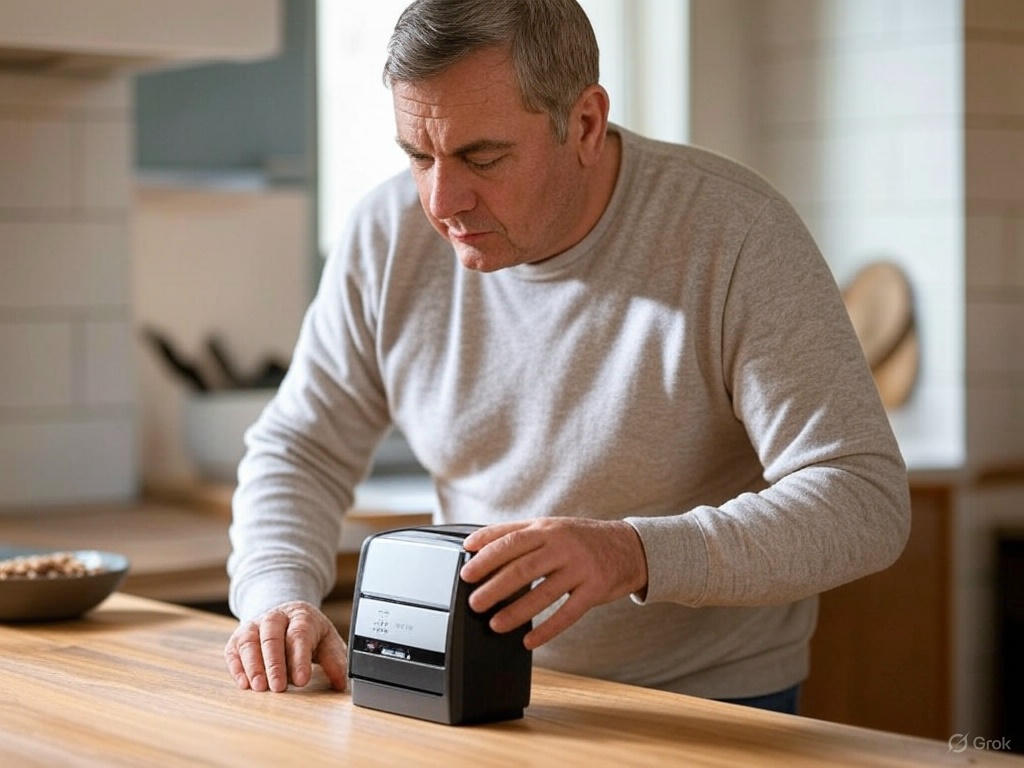Are you tired of rushing home to feed your hungry pup? Maybe your work schedule keeps changing, or perhaps you're planning a weekend getaway. Automatic dog feeders solve these problems by dispensing the right amount of food at preset times. But setting up these devices requires some know-how. This guide walks you through scheduling meals on your automatic dog feeder to keep your furry friend happy and healthy.
Why Timing Matters for Your Dog's Meals
Dogs thrive on routine. Their bodies expect food at certain times, and their digestive systems work best with consistent feeding schedules. When you feed your dog at the same times each day, you help prevent digestive issues and reduce anxiety.
Your dog's body clock runs on regular feeding times. This natural rhythm affects everything from bathroom habits to sleep patterns. Using an automatic feeder with proper scheduling maintains this important routine even when you can't be there.
Types of Automatic Dog Feeders
Before diving into scheduling, let's look at the main types of feeders you'll encounter:
Gravity Feeders: These simple devices refill the bowl as your dog eats. They don't offer timing control, so they work best for dogs who can self-regulate their eating.
Electronic Timed Feeders: These programmable devices dispense food at specific times. They range from basic models with simple timers to smart feeders with phone apps and cameras.
Smart Feeders: These connect to your home WiFi network and allow remote control through smartphone apps. Many include cameras so you can check on your dog during meal times.
Microchip Feeders: These specialized feeders open only for the pet wearing the right microchip or RFID tag. They're perfect for multi-pet households where pets have different diets.
Setting Up Your Automatic Dog Feeder: Step by Step
1. Choose the Right Location
Place your feeder on a flat, level surface away from walls. This prevents tipping and ensures food dispenses correctly. Keep the feeder away from water bowls to prevent electrical issues and soggy kibble. If you have multiple pets, consider placing feeders in separate rooms to prevent food stealing.
2. Understand Your Feeder's Programming Options
Most electronic feeders offer these basic programming features:
- Number of meals per day (usually 1-6)
- Meal times (set by clock time)
- Portion sizes (measured in cups or grams)
- Manual feeding option for treats or schedule changes
Smart feeders often include:
- Remote feeding through apps
- Custom voice recordings to call your dog
- Low food alerts
- Feeding history logs
Read your feeder's manual thoroughly. Each brand has slightly different setup procedures, and understanding the specifics saves time and frustration.
3. Establish a Feeding Schedule Based on Your Dog's Needs
Adult dogs typically eat twice daily---morning and evening. Puppies need more frequent meals, often 3-4 times per day until 6 months old. Senior dogs might do better with smaller, more frequent meals that are easier to digest.
Consider your dog's age, size, health conditions, and activity level when creating a schedule. Dogs with medical conditions like diabetes need precisely timed meals. Active dogs might need larger portions or an extra meal on exercise-heavy days.
A typical adult dog schedule might look like:
- Breakfast: 7:00 AM (1 cup of kibble)
- Dinner: 6:00 PM (1 cup of kibble)
4. Program Your Feeder
Now that you've planned your schedule, it's time to program your feeder:
For Basic Electronic Feeders:
- Set the current time first
- Program each meal time using the time controls
- Set portion sizes for each meal
- Run a test dispensing cycle to ensure everything works
For Smart Feeders:
- Download the companion app
- Connect the feeder to your WiFi network
- Create feeding schedules through the app interface
- Set portion sizes for each meal
- Test the feeder from both the device itself and the app
5. Test Your Setup
Never walk away from a newly programmed feeder without testing it first. Set a meal time for a few minutes in the future and watch the process. Check that:
- The food dispenses at the right time
- The correct portion comes out
- Your dog can easily access the food
- The feeder remains stable when your dog eats from it
If your dog seems confused by the feeder, try these training tips:
- Stay nearby during the first few scheduled feedings
- Use the manual feed button while your dog watches
- Praise your dog when they eat from the feeder
- Place familiar toys nearby to create positive associations
Troubleshooting Common Problems
Food Gets Stuck: Most jams happen because the kibble size doesn't match the feeder's dispensing mechanism. Try a different food brand or kibble size. Clean the dispenser regularly to prevent buildup.
Battery Issues: Many feeders use batteries as backup power. Replace them every few months even if they still work. Power outages can disrupt feeding schedules if backup batteries fail.
Programming Errors: Double-check your programmed times, especially AM/PM settings. Many pet owners accidentally set 7:00 PM when they meant 7:00 AM.
Your Dog Fears the Feeder: Some dogs get startled by the mechanical sounds. Try placing treats near the feeder when it's not active to create positive associations.
Special Scheduling Scenarios
Vacation Planning: Before leaving town, run your feeder for several days while you're still home. This ensures everything works properly and gives your dog time to adjust.
Multiple Dogs: If your dogs eat different foods or amounts, you'll need separate feeders. Place them in different rooms if one dog tends to steal food.
Medication Timing: For dogs who take medicine with meals, coordinate your feeder schedule with medication times. Some smart feeders include compartments for pills.
Seasonal Adjustments: Active dogs might need more food during high-exercise seasons. Adjust your feeder settings seasonally based on activity levels.
Advanced Tips for Smart Feeder Users
Smart feeders offer extra features that enhance your scheduling capabilities:
Gradual Diet Changes: Program slightly smaller or larger portions over weeks when transitioning to new food or managing weight.
Remote Adjustments: Use app controls to adjust portions or times when your schedule changes unexpectedly.
Voice Commands: Some feeders work with smart home systems. Try commands like "Alexa, feed the dog an extra half cup" for flexibility.
Data Tracking: Monitor your dog's eating patterns through feeding logs. These insights help identify potential health issues early.
Final Thoughts: Finding Your Perfect Schedule
The best feeding schedule depends on your specific situation. Start with standard recommendations, then adjust based on your dog's behavior and health. Watch for signs that your schedule needs tweaking:
- Your dog seems hungry between meals
- Food remains in the bowl after feeding time
- Weight changes
- Energy level changes
- Digestive problems
An automatic feeder maintains consistency but requires human oversight. Check the feeder regularly, clean it weekly, and adjust settings as your dog's needs change.
By taking time to properly schedule your automatic dog feeder, you create a reliable routine that keeps your dog healthy and happy---even when your own schedule gets hectic. Your furry friend gets the benefit of perfect timing while you gain peace of mind knowing they're well-fed even when you can't be there.

